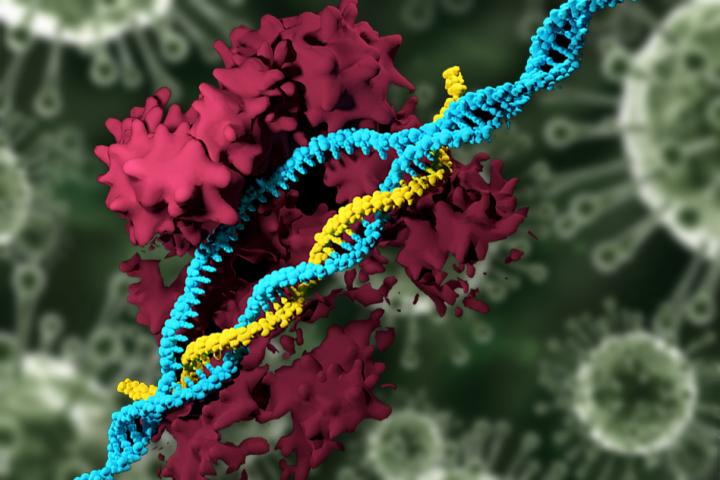Looking back at best of 2017)
A clinical trial of rapamycin on healthy seniors. The anti-aging drug extends the lifespan of mice and reduces inflammation markers.


Looking back at best of 2017)
The finding was a milestone in the field of anti-aging science. Professor Judith Campisi, Ph.D., a celebrity in the anti-aging field, and lead author of the study remarked
“Imagine the possibility of taking a pill [rapamycin] for a few days or weeks every few years, as opposed to taking something with side effects every day for the rest of your life. It’s a new way of looking at how we could deal with age-related maladies.” – Judith Campisi, PhD
Campisi’s discovery suggests that a person could take rapamycin intermittently, say, once a week, shutting down the chronic inflammation. Because the zombie cells haven’t gone away, they will eventually find their footing and start the inflammatory ball rolling once again. A person on this regimen would repeat the dosage intermittently and substantially reduce inflammation.

Looking back at best of 2017)
Summary: Nanotechnology meets gene editing. MIT researchers use nanoparticles instead of viruses to deliver the CRISPR gene editing system. This article first appeared on LongevityFacts. Author: Brady Hartman]
In a new study, MIT scientists have developed nanoparticles that deliver the CRISPR gene editing system, eliminating the need to use viruses for delivery.
Using the new delivery technique, the gene editors were able to cut out genes in about 80 percent of liver cells, the best success rate ever achieved with CRISPR in adult animals. Speaking about the success of the project, Daniel Anderson, senior author of the study and an associate professor in MIT’s Department of Chemical Engineering, said.

If you were awestruck by the New Year’s Day super moon, hold onto your pants.
On January 31, around midnight, the full moon will not only be super, it will be a blue moon and a blood moon.
The blue moon comes as it will be the second full moon in a month. That happens every two and a half years, hence the saying “once in a blue moon”.


High-tech warfare at knife-fight ranges: that’s the ugly future of urban combat. If you thought Baghdad was bad, with its roughly six million people, imagine a “megacity” of 10 or 20 million, where the slums have more inhabitants than some countries. Imagine a city of the very near future where suspicious locals post every US military movement on Twitter with digital photos and GPS-precise coordinates. Imagine roadside bombs that fly because the bad guys downloaded blueprints for a kamikaze mini-drone and built it with their 3D printer.
As the US pulls out of the mountains and deserts of Afghanistan, the Navy and Air Force may be looking to the wide-open Pacific, but the Army is increasingly concerned about the cramped alleyways of Third World cities. (The Marines, as usual, have a foot in both worlds). Chief of Staff Ray Odierno’s personal Strategic Studies Group — now led by hybrid warfare expert David Johnson — is working on the subject, as is the Army’s think tank and teaching institution, Training and Doctrine Command (TRADOC). This August, after months of seminars, simulations, and study, the Army War College will host a “deep future wargame” set in a megacity, probably a coastal one, circa 2035.
“We talk about the danger of failed states: Imagine a failed megacity,” offers Col. Kevin Felix of TRADOC’s Army Capability Integration Center (ARCIC), which plays a leading role in organizing the wargame. Even a partial breakdown of security and public services could put thousands of people in peril — or under the rule of drug gangs, as in Brazil’s infamous favelas; or of terrorist groups, like Hezbollah in parts of Lebanon. In those parts of the city, Felix told me, “there may be order, but I wouldn’t define it as law and order.”
The future of clothing unfolds at this year’s Consumer Electronics Show with the unveiling of an e-ink dress and much more!
It is not Iron Man. It isn’t even Iron Fist. Lockheed Martin’s newest exoskeleton is more like Iron Leg. But for a soldier humping his weapons, ammo and body armor up a mountain in Afghanistan or a high-rise building in a future urban battle, a device to take the load off would be welcome. And, unlike science fiction supersuits, we can build it now.
Exoskeletons are part of the Pentagon’s Third Offset Strategy, which seeks to use robotics and artificial intelligence to enhance humans on the battlefield, rather than to replace them. There’s no area where the need is more acute than in the infantry, which takes the vast majority of casualties.
Why aren’t holograms or related optical devices part of our everyday lives yet? The technologies can be created by using magnetic fields to alter the path of light, but the materials that can do that are expensive, brittle and opaque. Some only work in temperatures as cold as the vacuum of space.
Minjeong Cha, MSE PhD Student, applies a gel made up of chiromagnetic nanoparticles that are a conduit for modulating light to a laser apparatus. Image credit: Joseph Xu, Michigan Engineering
Now, researchers from the University of Michigan and the Federal University of Sao Carlos in Brazil have demonstrated that inexpensive nanoparticles in a gel can replace traditional materials at a drastically reduced cost. And their approach works at room temperature.